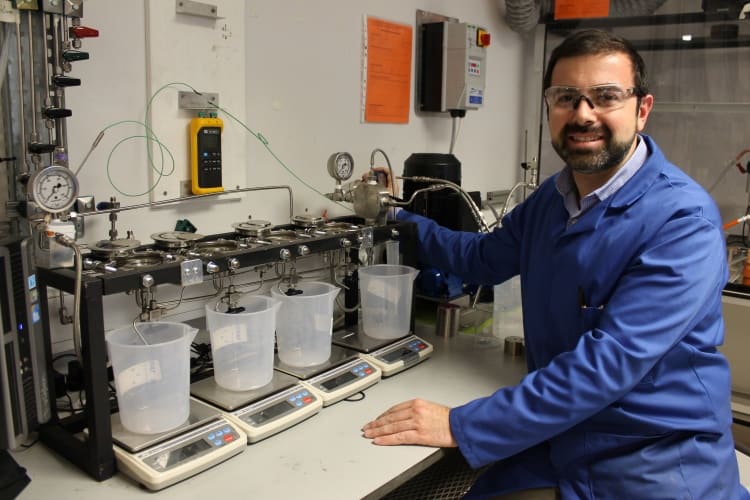Catalytic metal foams harness sunlight to clean water
A chemical engineer at Bath University has been given a five-year EPSRC Fellowship to develop photocatalytic nanoporous anodic metal foams that can remove micropollutants from water.

Professor Davide Mattia (Credit: Bath University)
Micropollutants – found in toxic chemicals such as drugs, hormones and pesticides – appear in wastewater in low concentrations, and can eventually work their way into the food chain via the soil, potentially causing long-term harm. The majority of water treatment plants in the UK do not have the ability to remove these chemicals, and impending legislation could necessitate significant investment from the industry.
A team led by Davide Mattia, Professor of Chemical Engineering at Bath University’s Centre for Advanced Separations Engineering (CASE) and Water Innovation & Research Centre, is working on a solution claimed to be both environmentally sound and cost-effective. A highly porous photocatalytic metal foam captures the micropollutants, which are then broken down into harmless organic compounds by sunlight. Unlike other photocatalytic methods, the nature of the foam prevents leaching of nanoparticulate material, keeping toxic compounds out of the food chain.
Register now to continue reading
Thanks for visiting The Engineer. You’ve now reached your monthly limit of news stories. Register for free to unlock unlimited access to all of our news coverage, as well as premium content including opinion, in-depth features and special reports.
Benefits of registering
-
In-depth insights and coverage of key emerging trends
-
Unrestricted access to special reports throughout the year
-
Daily technology news delivered straight to your inbox










UK Enters ‘Golden Age of Nuclear’
Anybody know why it takes from 2025 to mid 2030's to build a factory-made SMR, by RR? Ten years... has there been no demonstrator either? Do RR...